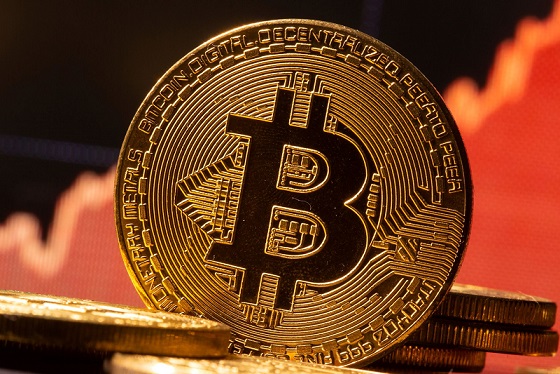Bitcoin price today: dips to $92k as Fed cut doubts spark risk-off mood
Bitcoin price continued its downturn on Wednesday, plunging over $8,000 from its peak yesterday. The flagship cryptocurrency was down by 5.42% at $57,328. It had dipped even lower earlier, hitting $56,500 after reaching an all-time high of $73,797.68 just six weeks ago.
Bitcoin losses also pulled other cryptocurrencies down with it. Ether, for instance, lost more than 4% and was recently trading below $2,900, after having surpassed $4,000 in March for the first time since December 2021.
“The market may feel tired and lacking a stimulant may be ready to test further bottoms in the $50,000 range,” Kristian Haralampiev, Structured Products Lead at Nexo, told Investing.com.
The slump in demand is also clear from how much less Bitcoin is being bought by spot exchange-traded funds (ETFs) in the U.S. After hitting a peak in mid-March with daily buys over $1 billion, the rate at which these ETFs are purchasing Bitcoin has dropped sharply. BlackRock’s iShares Bitcoin Trust even had its first day with zero new money since Bitcoin ETFs started.
Adding more pressure on Bitcoin's price is the increased selling by miners. In April, daily sales hit the highest point since early January. This uptick in selling usually shows that miners need to cover costs or cash in some profits, which can push prices down even more. Furthermore, this move to cash in on profits triggered a spike in long liquidations of leveraged bitcoin positions.
Crypto-related stocks seemingly paused their earlier losses but were still unable to swing back into the green. MicroStrategy, the largest corporate holder of Bitcoin, dropped 5%, and crypto exchange Coinbase (NASDAQ:COIN) was down 3.5%. Mining stocks also took a hit. Among the big players, Riot Platforms (NASDAQ:RIOT) and Marathon Digital (NASDAQ:MARA) saw their shares decrease by 3.2% and 3.5%, respectively.
The recent dip in Bitcoin prices is mostly due to big-time players and long-term holders pulling back, according to CryptoQuant. These “whales” and regular heavy investors have cut down their monthly growth big time—from over 200,000 BTC in late March to just 96,000 BTC now.
Overall, the deep-pocket buyers dialed back their growth rate from 12% to 6%. As such, it wouldn’t make sense for this pullback to be short-lived and for the rally to resume as when these long-term holders start selling more, it usually means the market is bracing for a more lasting downtrend.
